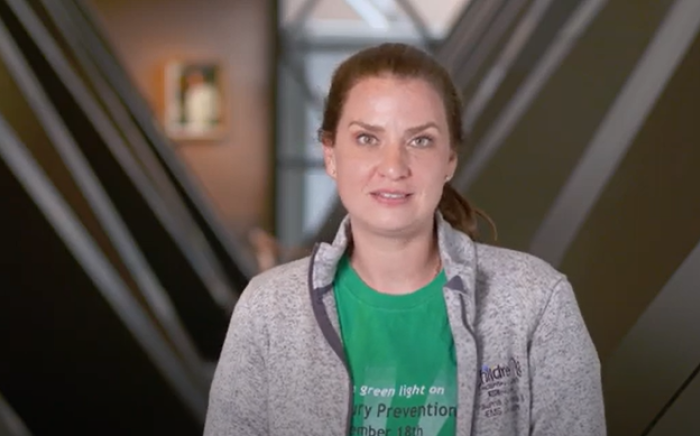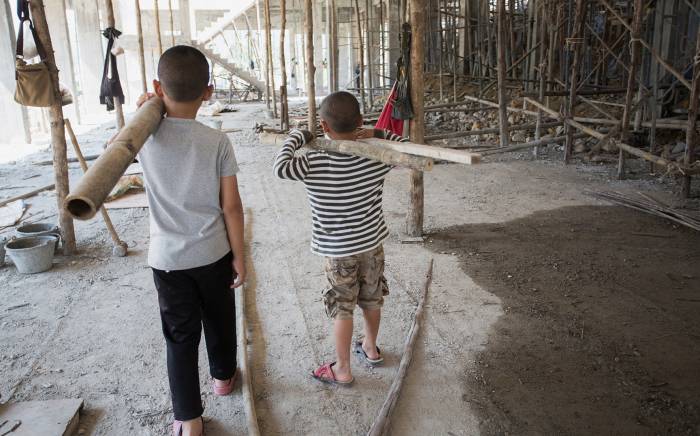More than 6 million American children have asthma. It causes more lost school days than any other long-term childhood illness and is the leading cause for hospital admission among children. Today, more children are treated for asthma than ever before.
Children with asthma can stay well and lead normal lives if asthma is controlled. Asthma is controlled when children:
- Have no signs of asthma
- Exercise and play like other children
- Sleep through the night
- Go to school and work regularly
- Have no asthma-related hospital visits or emergency room visits
- Need rescue medicine less than 3 times a week
Asthma can be controlled if children learn about asthma, see their doctors or nurses regularly, follow an asthma action plan and avoid asthma triggers.
Get information about our ACE Sessions (Asthma Control Education Classes)
What is Asthma?
Asthma is an illness that affects the lungs and causes coughing, wheezing and difficulty breathing. In children with asthma, breathing tubes in the lungs may be overly sensitive and overreact to certain triggers. When you have asthma, three things happen:
- Breathing tubes get swollen and inflamed. This makes the opening smaller and hard for air to get through.
- Thick mucous plugs up the breathing tubes.
- Muscles squeeze tight around breathing tubes making it hard to get air in and out.
The swelling, mucous and tight muscles cause coughing, wheezing and difficulty breathing.
Signs of Asthma
Early Warning Signs are the earliest signs that asthma is beginning to get out of control. Act quickly and refer to the yellow zone of your action plan. Some possible early warning signs include:
- Funny feeling in chest
- Cold symptoms
- Coughing day or night
- Wheezing day or night
Late Signs mean EMERGENCY! Follow your asthma action plan and refer to the red zone directions. Do not waste time! Some possible Late Warning Signs include:
- Tight chest
- Breathing hard or fast
- Using neck or stomach muscles to breathe
- Constant coughing
- Trouble talking or walking
- Vomiting
- Blue lips or nails
Controlling Asthma Triggers
Certain things may make asthma worse. Asthma triggers are different for everyone. Controlling or avoiding triggers is important in controlling asthma. Below are some of the most common triggers and some ways to control them.
Mold and Pollen
- Use air conditioning and avoid opening windows when mold and pollen counts are high.
- Clean or change filters on air conditioner or heater once a month.
- Use a dehumidifier if living area is damp.
- Do not use vaporizers or humidifiers.
- Clean tub and shower curtain regularly to reduce indoor mold growth.
- Shower or bathe after playing outside.
Dust Mites
- Use zippered plastic or allergy-proof mattresses and pillow covers.
- Wash bed linens, pajamas and stuffed toys weekly in hot water.
- Vacuum and dust weekly.
- Limit carpeting.
- Limit number of stuffed toys in bedroom.
Dogs, Cats and Birds
- Do not have feathered or furry pets in the home.
- Avoid things made with feathers, like pillows or down comforters.
Cockroaches
- Call pest control.
- Store food in closed containers
Weather
- Stay indoor as much as possible when weather changes.
- Watch closely for signs of asthma on days of weather change.
Colds and Viruses
- Avoid people with colds, the flu or viruses.
- Wash hands often
- Ask your doctor or nurse for a flu shot.
Irritants
- Avoid perfumes, talcum powder, hairspray, air fresheners and carpet-fresh powders.
- Do not smoke (or let anyone else smoke) in your house or car, even if the child who has asthma is not present.
Exercise
- Playing hard at recess, gym or in sports can trigger an attack in some children. However, exercise is very important for all children — even those with asthma. Children with asthma can do the same activities as their friends and classmates if their asthma is under control and they take their medicine as directed by their doctor or nurse.
- Ask your physician for a medicine plan that allows for exercise.
- Have quick relief medicine available during exercise.
- Start an exercise program slowly. Warm up and cool down.
| Download Asthma Action Plan |
Follow your Asthma Action Plan
Everyone with asthma needs an Asthma Action Plan. Contact your doctor or nurse to get an Asthma Action Plan specially designed for your child. Everyone who cares for your child will need a copy, especially your child's school, baby-sitters, sports coaches and relatives.
In the Zones
Green Zone:
Your child is well! No signs of asthma. They can do normal activities and sleep well at night.
WHAT TO DO:
- Watch for early signs of asthma.
- Take daily controller medicines as directed to keep asthma under control.
- Use pre-exercise medicine as directed.
Yellow Zone:
Caution! Your child is having early signs of asthma. Take action to get control.
WHAT TO DO:
-
Follow your Action Plan and take your quick relief medicine. Call your doctor if quick relief doesn't work.
-
Continue taking the Green Zone medicine.
Red Zone:
Danger! Your child is having the late signs of asthma. This is an emergency!
WHAT TO DO:
- Call 911 or the emergency number in your area.
- Follow your Action Plan and take quick relief medicine for rescue.
- Contact your doctor or nurse immediately.












